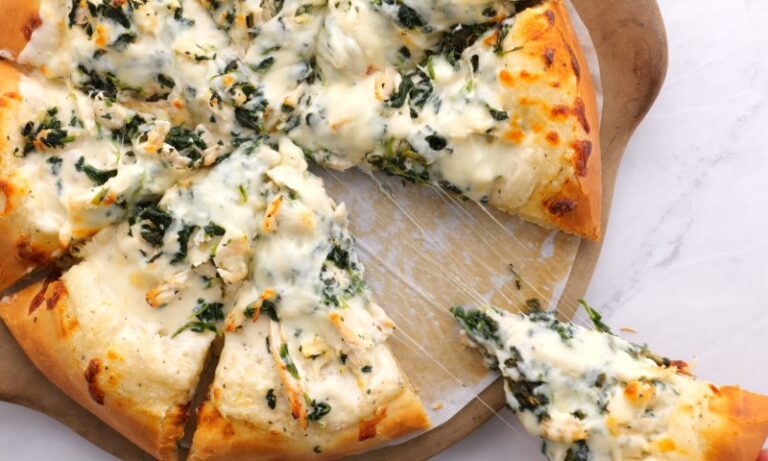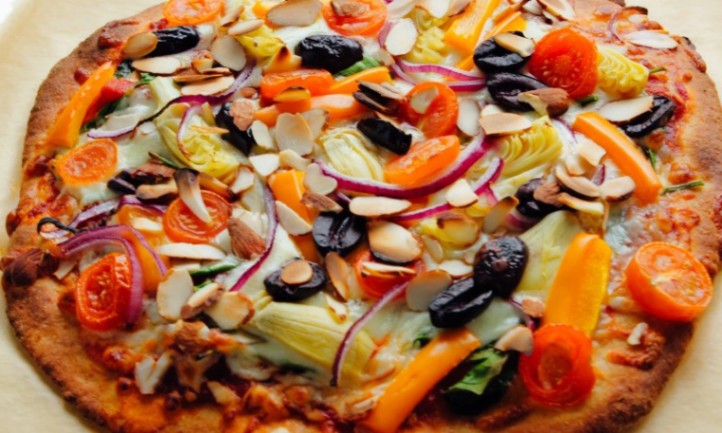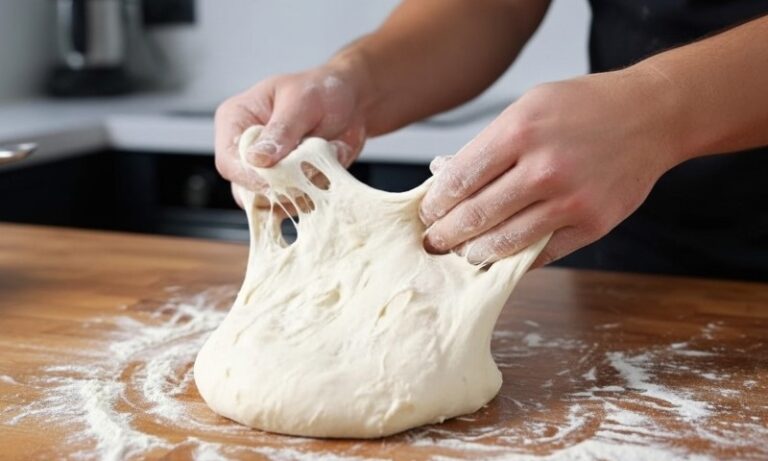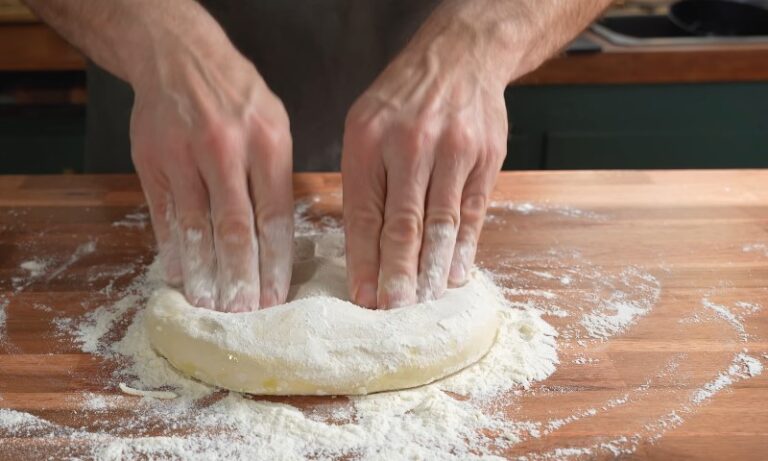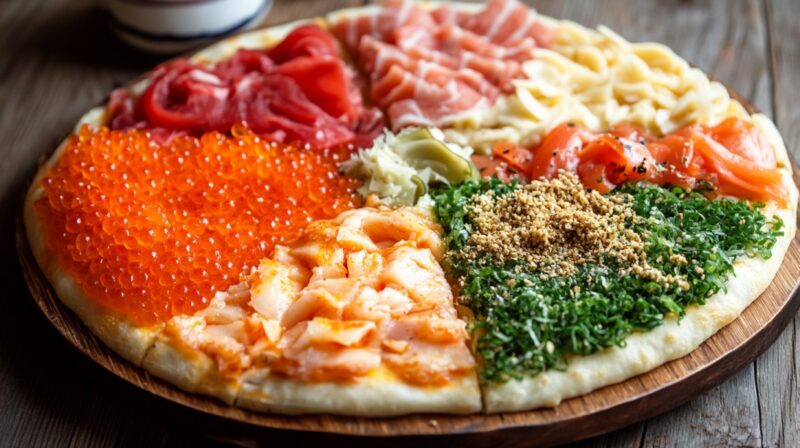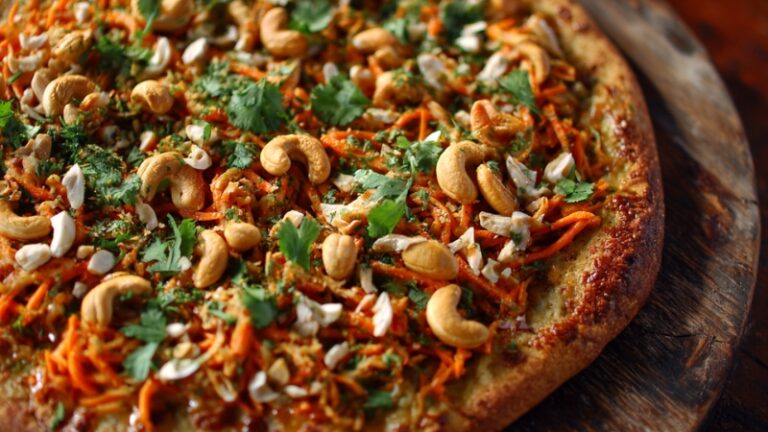Pizza originated in Italy, but it made its way into Japan during the post-war boom, arriving alongside American fast food chains and pop culture. Instead of copying it wholesale, Japanese chefs did what they do best:
- Adapt
- Tweak
- Reimagine
In no time, pizza started reflecting local palates and regional ingredients. Turning foreign foods into something local is practically an art form in Japan.
It’s how hamburgers got teriyaki sauce, pasta took on mentaiko toppings, and pizza now features ingredients that would leave an Italian nonna speechless.
Today, we want to talk about Japanese pizza toppings you probably haven’t tried.
1. Shirasu (Baby Sardines)

Shirasu, tiny, translucent whitebait, are a staple in many Japanese kitchens, often eaten over rice, tossed into salads, or mixed with daikon. On pizza, they take on an unexpected role.
Their small size means they integrate seamlessly into the structure of the slice. Instead of overpowering, they act like a seasoning, present but not dominant. Light in flavor, yet high in umami, they offer a distinct contrast to heavier toppings like cheese or fatty meats.
Texture plays an important role. When baked, shirasu retains a soft bite that contrasts beautifully against a crisp crust. Olive oil drizzled before baking helps them stay tender and glistening, not dried out.
- Leeks: add sweetness and a soft texture
- Yuzukosho: gives a peppery citrus heat
- Fava beans: bring creaminess that absorbs excess salt
- Cherry tomatoes: add bursts of acidity and moisture
- Olive oil: ties the ingredients together and enhances aroma
Shirasu pizzas often surprise those used to bold, heavy toppings. There’s delicacy in the bite, but also complexity. It’s a case of letting small ingredients make a big impression.
Perfect for fans of nuance, freshness, and seafood without intensity.
2. Shirako (Cod Milt)
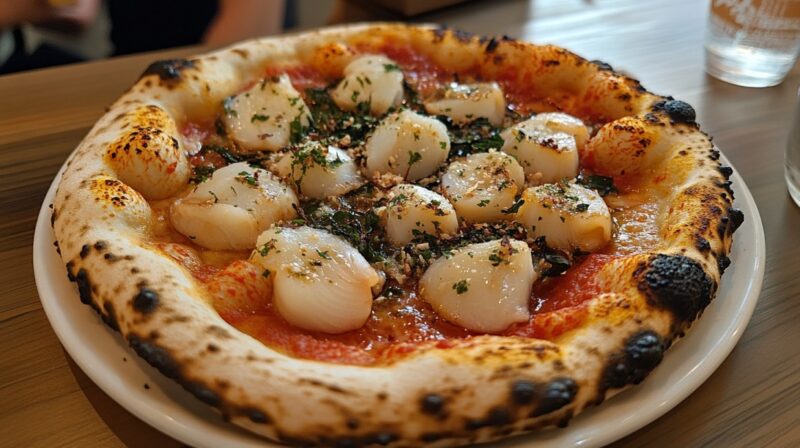
Shirako, often translated as cod milt, brings an element of luxury and shock factor to any dish. In sushi bars, it’s served steamed, grilled, or raw.
On pizza, it transforms into a creamy, almost custard-like topping that melts slightly under heat and leaves behind a silky texture with a distinct marine essence.
It may look like a daring choice, and in many ways it is. Shirako is delicate in flavor but unmistakably seafood-forward. It doesn’t shout, it seduces. When paired properly, it creates a flavor experience that lingers long after the bite.
Texture is part of its charm. Soft and rich, it contrasts sharply with crispy dough or crunchy toppings. That contrast heightens its effect, making every bite dynamic rather than monotonous.
- Gorgonzola: brings a strong, funky counterbalance
- Japanese leek: mild, sweet onion flavor adds lift
- Black pepper: sharpens the overall profile and tames creaminess
- Olive oil: deepens richness without adding clutter
- Thin crust: gives crispness that shirako needs for balance
On pizza, it becomes accessible, yet it keeps its identity intact.
3. Tsukudani Kombu (Soy-Simmered Seaweed)
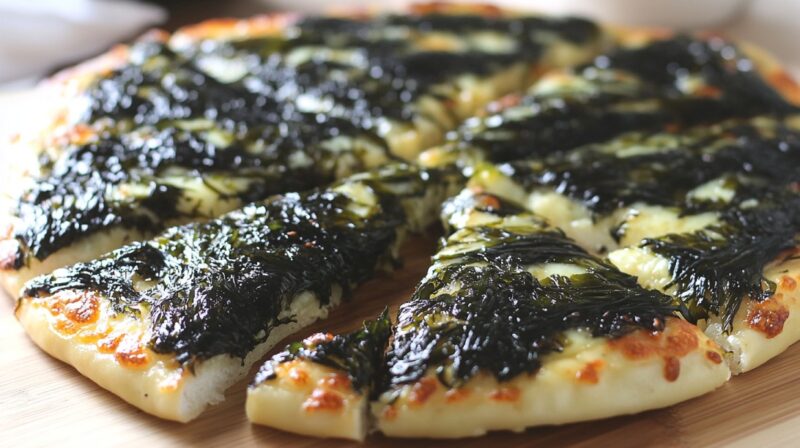
Tsukudani kombu starts as humble kelp but transforms into something entirely different once simmered in soy sauce, mirin, and sugar. The result is a glossy, umami-dense topping with a chewy texture and a salty-sweet profile that feels almost meaty.
It’s commonly eaten with rice, but on pizza, it opens up a world of fusion flavor that defies expectations.
Its dark color and slightly sticky consistency create visual contrast on a light dough base. It also acts as a binder when layered under or over other toppings.
Unlike dried seaweed, tsukudani kombu offers depth and chew, a slow-cooked character that builds with every bite.
The flavor carries soy, brine, and a hint of sugar. It leans savory, but the touch of sweetness rounds it out. It isn’t fishy, but when paired with seafood, it enhances their flavors with a background hum that resonates through the slice.
- Tuna sashimi: clean, mild fish to echo the seaweed’s base
- Wasabi mayo: adds heat and creaminess without overpowering
- Clams: soft texture and mild brine layer well with kombu
- Shredded nori: intensifies seaweed character and adds crunch
- Thin miso or soy-based crust glaze: unites the ingredients subtly
Each bite of tsukudani kombu pizza offers complexity. Flavor builds over time, rewarding slow chewing and mindful eating.
4. Pickled Mackerel (Saba)

Saba, or pickled mackerel, brings boldness to pizza in both flavor and fragrance. Its oily texture and sharp acidity cut through richer elements on the pie, creating a balance that makes every bite dynamic. Unlike milder fish toppings, saba holds its ground. It’s assertive but never abrasive when paired correctly.
Pickling enhances the natural umami in mackerel while taming its intensity. Vinegar brings brightness, and salt preserves depth. When baked, saba softens slightly, allowing oils to infuse the crust and surrounding ingredients, almost like anchovies, but with more body and nuance.
Saba’s flavor demands support. Ingredients that echo freshness or supply crunch help keep the balance and prevent any one element from dominating. A smart combination builds harmony rather than competition.
- Edamame: adds color, bite, and subtle sweetness
- Bell peppers: deliver crisp texture and vegetal sweetness
- Cherry tomatoes: brighten and lift the flavor profile
- Sesame drizzle: adds nuttiness and softens acidity
- Mild cheese (like mozzarella): allows saba to take the lead without clashing
Each bite layers creaminess with tartness, crunch with oil—a complex ride grounded in traditional Japanese preservation techniques.
5. Sakura Ebi (Tiny Pink Shrimp)
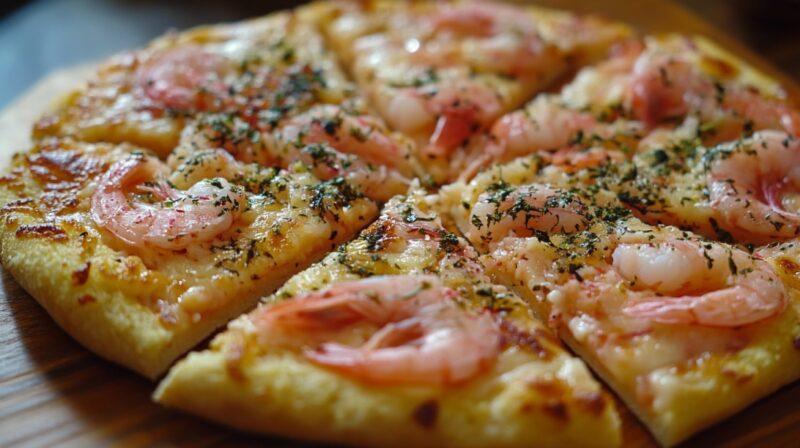
Sakura ebi are tiny pink shrimp caught primarily in Suruga Bay. They’re often sun-dried, intensifying their umami and creating a satisfying crunch when cooked. On pizza, they deliver texture, aroma, and vivid color all at once.
When baked, sakura ebi turn crispy at the edges while retaining a slightly chewy center.
Their size allows them to scatter across the pizza evenly, making each bite subtly briny and texturally complex. No part of the slice gets ignored, they reach the corners, the crust, the middle.
Aroma plays a major role here. As the shrimp roast, they release a toasty, oceanic scent that fills the kitchen or restaurant. It’s unmistakable, and it tells you what you’re about to taste.
- Asparagus: provides a grassy, slightly bitter counterpoint
- Smoked cheese: adds warmth and depth without competing
- Chili oil: gives a clean heat that enhances umami
- Garlic chips: offer crunch and aroma that amplify flavor
- Scallion greens: finish the slice with freshness and color
Sakura ebi pizzas succeed because they don’t try to hide. They celebrate the shrimp’s visual beauty, its salt-kissed bite, and the satisfaction that comes with layered crunch.
The shrimp may be tiny, but the impact is massive.
6. Chashu (Braised Pork Belly)

Chashu brings indulgence to pizza in a way few toppings can match. Traditionally used in ramen, this soy-and-mirin-braised pork belly delivers a melt-in-your-mouth texture and complex, savory flavor.
Slices of chashu soften further in the oven’s heat, releasing rendered fat into the crust and neighboring toppings. Each bite brings sweet-salty depth, reinforced by the slow-cooked glaze that coats the meat. Unlike bacon or ham, chashu offers layers of softness that feel luxurious without being greasy.
To balance its richness, pair it with ingredients that add brightness, heat, or umami punch. A smart topping strategy ensures the chashu doesn’t overwhelm the whole pie.
- Miso sauce base: builds depth beneath the pork
- Soft-boiled egg slices: echo the ramen theme while adding creaminess
- Shredded seaweed (aonori or nori): brings oceanic sharpness
- Scallions: cut through fat with onion freshness
- Corn or bamboo shoots: offer crunch and sweetness
The overall effect is ramen in pizza form, but with dough instead of noodles and cheese in place of broth.
Comfort food meets culinary remix. Chashu brings soul, flavor, and a surprising sense of balance when paired with the right partners.
The Japanese Approach to Pizza
Pizza in Japan is a reimagined experience. Every slice reveals attention to detail, creative pairings, and a dedication to seasonal freshness. Classic tomato sauce and mozzarella still exist, but they share the spotlight with dashi-infused bases, seaweed garnishes, and toppings that come straight out of a sushi bar.
What sets Japanese pizza apart is precision. . Even a seemingly odd topping like bitter melon serves a purpose: cutting through fatty pork or mellowing intense sauces. Balance guides the choices, not tradition.
Seafood plays a starring role. Shirasu, mentaiko, and sakura ebi appear more often than pepperoni. Umami takes priority over saltiness. Chefs lean into fermented ingredients, smoky accents, and textures ranging from soft to crunchy, all in a single bite.
Crusts can surprise too. Rice flour bases add chewiness. Mayonnaise spirals replace pesto. Wasabi gets drizzled like olive oil. The entire pie becomes a platform for invention.
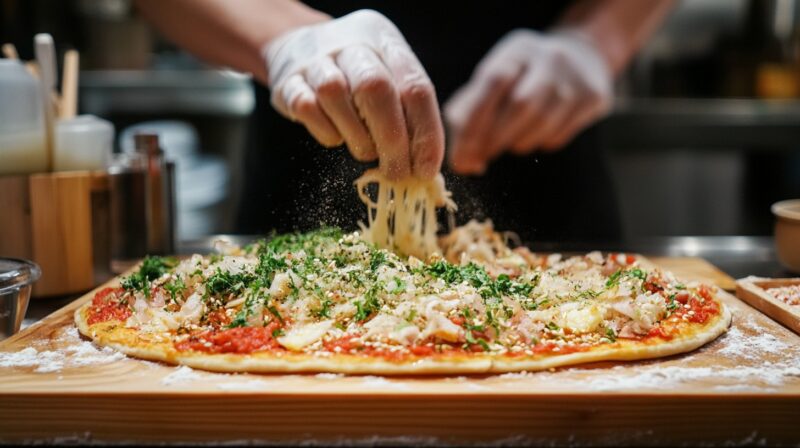
Where to Try These Pizzas in Japan
Finding these unconventional toppings isn’t hard—Japan has no shortage of adventurous pizzerias, fusion bistros, and experimental chains that lean fully into local flavor. Tokyo and Osaka may lead the charge, but regional eateries across the country contribute just as boldly to the culinary remix.
Start with Shakey’s Pizza, a familiar name with an unfamiliar twist. Their all-you-can-eat buffets often feature rotating local specials like corn-mayo, teriyaki chicken, and dessert pizzas topped with mochi and azuki beans.
In Okinawa, you might stumble upon versions with pineapple and Spam, echoing the island’s distinct influences.
Wafu-style pizzerias, which embrace Japanese-Italian fusion, take creativity up a notch. These are typically run by chefs trained in both traditions, combining imported cheeses with local produce and seasonings like sansho pepper, miso, or yuzukosho. Crusts vary wildly, some made with rice flour, others fermented with sake lees.
Izakayas might surprise you with their pizza menus. Here, chashu-topped flatbreads or squid ink slices are often found as part of the late-night snack lineup, paired with cold beer and boisterous conversation. What these places lack in formality, they make up for in flavor experimentation.
Summary
Trying pizza in Japan is like unlocking a new way to think about flavor. There’s tradition, but there’s also bold experimentation that pushes every boundary of what pizza can be.
Instead of sticking to mozzarella and pepperoni, menus welcome fermented soybeans, squid ink, pickled fish, and even marshmallows.
Each slice tells a story about cultural creativity, how local chefs take something global and make it theirs, without apology or restraint. Japanese pizza doesn’t follow rules. It invites curiosity and rewards every risk with flavor you didn’t see coming.

